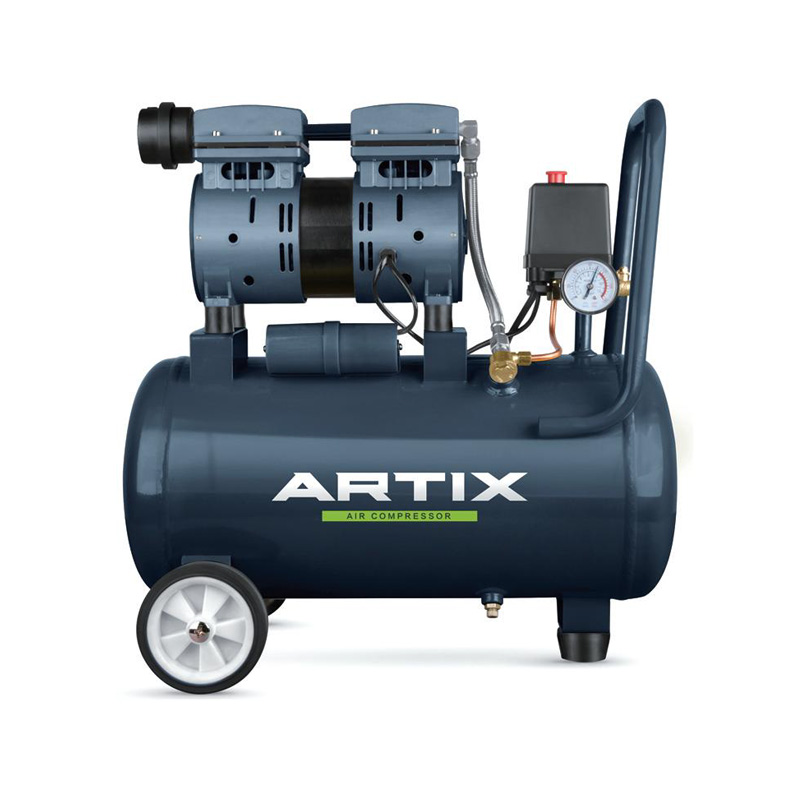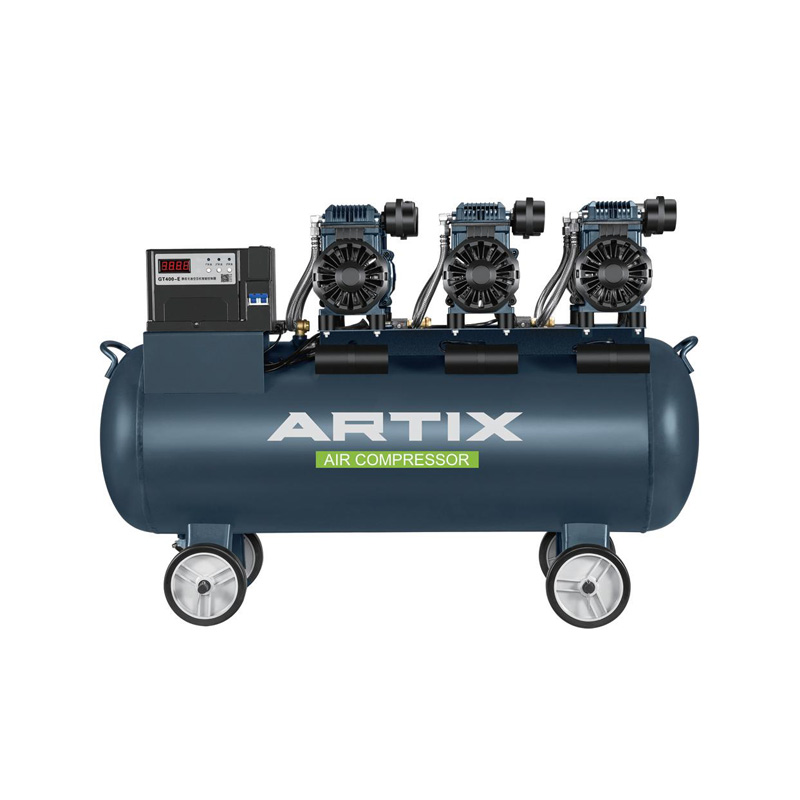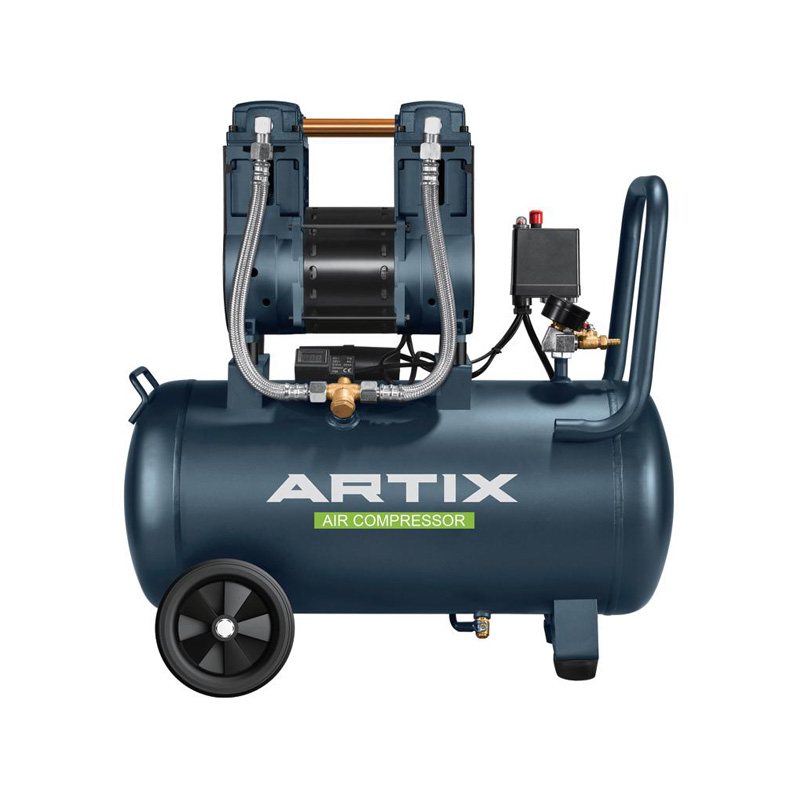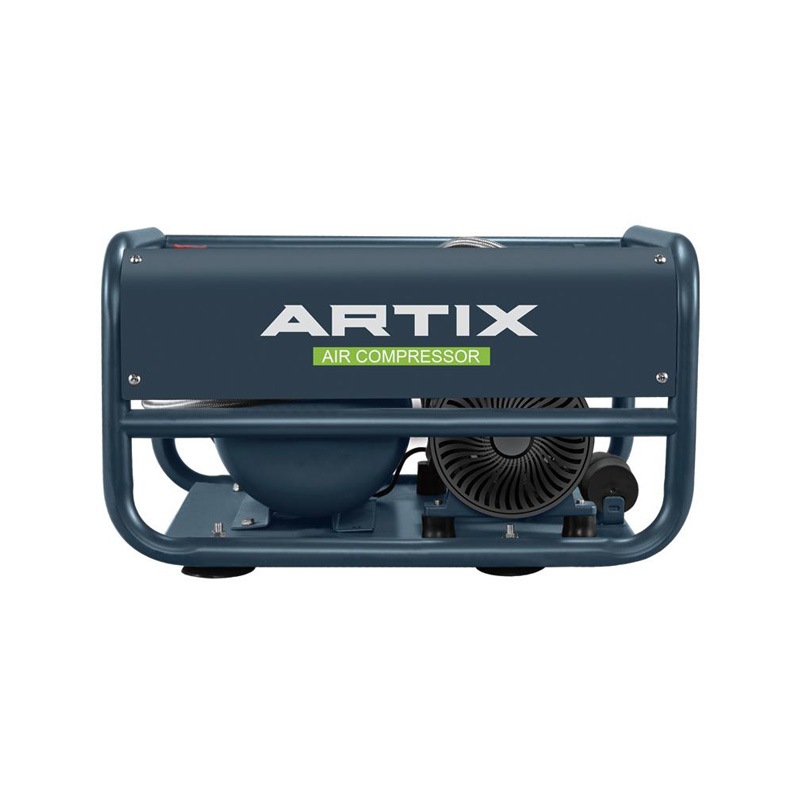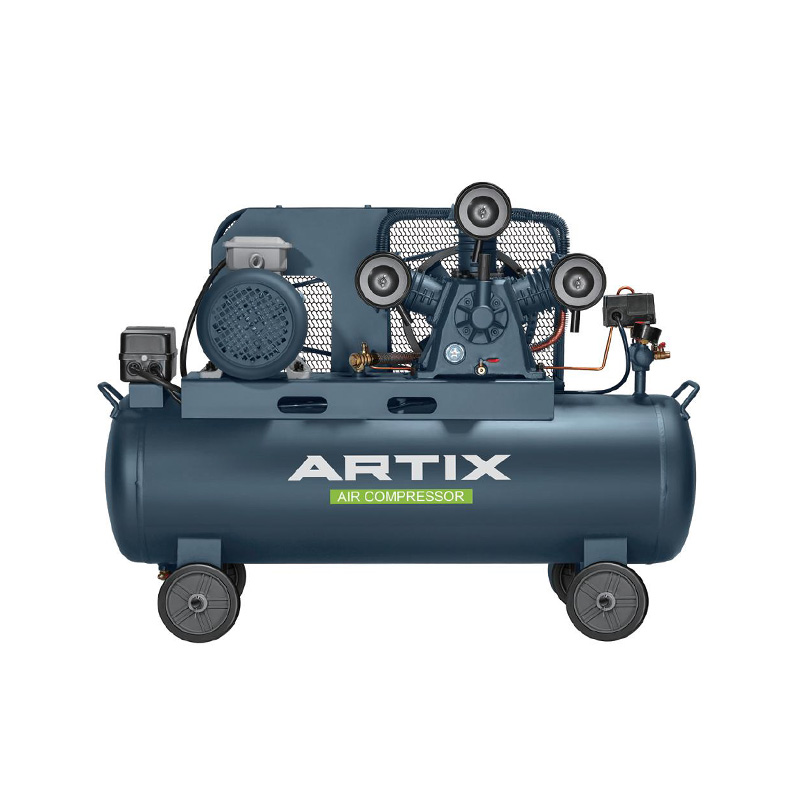The Belt Driven Compressor and the Direct Drive Compressor are two strategies that frequently come into focus in the dynamic field of compressed air systems. At ARTIX, we constantly explore efficiency gains across both types of systems. Now that you’re interested in optimizing your operations, it's useful to understand where each design enhances productivity, durability, or cost-efficiency.
Understanding Compressor Drive Systems
- What Is a Belt Driven Compressor?
A Belt Driven Compressor operates using a V-belt and pulley configuration that transfers power from the motor to the pump. This setup allows adjustable pressures and adaptable speeds—if your operation shifts from low-demand tasks one day to high-demand the next, simply swapping pulleys can adjust output without replacing the entire unit.
- What About the Direct Drive Compressor?
By contrast, a Direct Drive Compressor connects the motor directly to the pump shaft—no belts, no pulleys, fewer moving parts. As a result, it offers higher mechanical efficiency and typically lower energy loss. We'll revisit how these design differences impact ongoing efficiency.
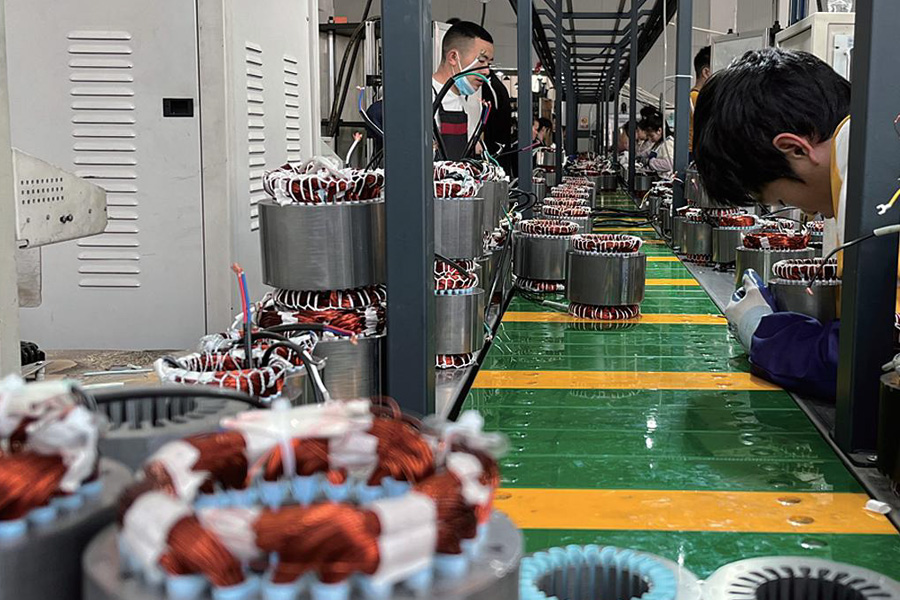
1. Understanding Belt-Driven Compressor Flexibility
Speed and Pressure Adjustment
One standout benefit of a belt-driven compressor is its ability to adjust pressure outputs simply by changing pulley ratios. This means teams can quickly adapt to tools requiring varying PSI—without replacing the entire machine. This kind of operational agility helps avoid extra costs and reduces downtime.
Vibration Damping and Quiet Operation
Thanks to the belt system acting like a shock absorber, belt-driven compressor units commonly run more quietly and smooth out vibrations. This not only enhances workplace comfort but also protects internal components from stress and wear.
2. Why Direct Drive Compressor Gains Traction
Maintenance Simplicity
Without belts or pulleys, direct drive compressor systems eliminate frequent tensioning or part replacement tasks. In effect, ARTIX customers benefit from lower maintenance overhead and better uptime.
Compact and Rugged Design
The simplified, compact structure of direct drive compressors makes them ideal for installations where space is tight or conditions are harsh. They’re also built to endure harsh temperatures without compromising performance.
3. Choosing Between Flexibility and Simplicity
Select Based on Operational Priorities
If your operations frequently shift between pressure needs or demand quiet workspace performance, the adaptability of a belt driven compressor might suit you best. On the other hand, if you prioritize reduced servicing, ruggedness, and compactness, consider a direct drive compressor—especially in mobile or space-constrained applications.
Long-Term Cost Considerations
While belt-driven systems may cost less upfront and enable performance tuning via pulleys, they involve belt maintenance and potential slippage issues in variable temperatures. Conversely, direct drive options may demand a higher initial investment but return benefits through lower parts wear, fewer failures, and less energy loss.
4. ARTIX’s Approach to Matching Your Needs
At ARTIX, we don’t just build compressors—we engineer solutions. Here's how we guide you:
Needs Assessment
— Collaborate to identify environment, usage patterns, and maintenance capacity.
Solution Tailoring
— For fluctuating PSI or quieter shops, we propose belt-driven compressor options.
— For fixed roles, tight footprints, or rugged sites, we recommend Direct Drive Compressor models.
Ongoing Support
— Regardless of type, ARTIX ensures you receive expert setup guidance, preventive check-ups, and fast service assistance if needed.
To learn more about how ARTIX applies these insights, feel free to reach out. Whether it's the dynamic adaptability of a belt-driven compressor or the robust simplicity of a direct-drive compressor, our goal is to deliver the right fit for your operations—with efficiency, reliability, and peace of mind.
